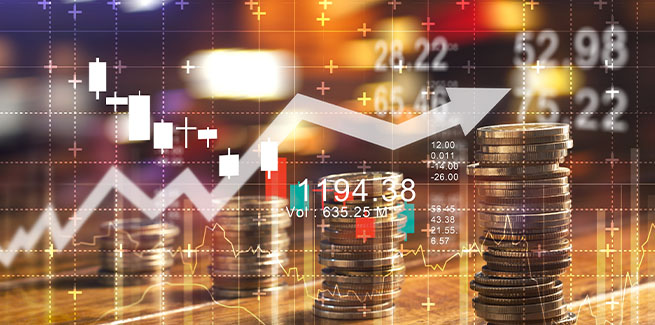Australian economic activity rose 3.3 per cent (in seasonally adjusted chain volume terms) in the September quarter 2020, the strongest quarterly growth since the 1970s, according to figures released by the Australian Bureau of Statistics (ABS).
The growth means that the economy is now officially out of recession, after entering it in the June quarter.
Household spending drove the economy, rising 7.9 per cent due to increased spending on goods and services - the largest increase on record.
Indeed, consumption was up in fourteen of the seventeen categories, with the largest increases being in transport, hotels, cafes and restaurants. Spending on services, including hotels, cafes and restaurants, as a segment rose 9.8 per cent, with a tick up in health and recreation and culture as containment measures were relaxed.
The household saving to income ratio declined from its record high last quarter, but remains elevated at 18.9 per cent, due to the partial recovery in household consumption, which outpaced income growth.
Private investment fell 0.2 per cent in this quarter, with increased housing investment activity offset by weaker business investment (-3.0 per cent).
Dwelling investment was up by 0.6 per cent following eight consecutive quarterly falls.
It was largely driven by alterations and additions which rose 5.1 per cent.
Ownership transfer costs increased 21.4 per cent, as housing market activity rebounded following social distancing measures in the previous quarter.
The head of national accounts at the ABS, Michael Smedes, said: “Following the record 7.0 per cent decline in the June quarter, Australia experienced a partial recovery in the September quarter. As a result, economic activity fell 3.8 per cent through the year to September quarter.”
The easing of restrictions also increased demand for goods, which rose 5.2 per cent. Victoria’s household spending fell 1.2 per cent, the only state to record a fall, as tighter restrictions were imposed.
Mr Smedes added: “Despite record quarterly growth in household spending, the level in September quarter was 6.8 per cent lower than that recorded in December quarter 2019.”
Compensation of employees rose 2.3 per cent as hours worked increased. Part-time employment also rose.
Net trade detracted 1.9 percentage points from GDP, the largest detraction since September quarter 1980.
Imports of goods and services rose, predominantly reflecting increased demand for consumption goods as restrictions lifted. Exports of goods of services fell, as a result of weaker demand for Australian mining commodities and constraints on travel.
Speaking of the figures, Treasurer Josh Frydenberg said the numbers "confirm that Australia’s economic recovery is underway".
"The Australian economy is coming back," he said.
"Technically, Australia’s recession may be over but Australia’s economic recovery is not," he continued.
"There is a lot of ground to make up and many Australian households and many Australian businesses are doing it tough - very tough.
"Victoria, a quarter of the national economy has only just begun its recovery after the devastating second wave.
"In these National Accounts, every state saw strong growth in the quarter, except for Victoria where it contracted.
"If Victoria had grown in line with the rest of the nation, national growth in the September quarter would have been 5 per cent, not 3.3 per cent.
"From the very beginning of this crisis, the goal of the Morrison Government has been to keep Australians in work and to help those Australians out of work, get a job.
"This is what is happening."
He noted the dwelling investment had increased by 0.6 per cent, adding: "The outlook for the housing market is positive, supported by programs like HomeBuilder and the First Home Loan Deposit Scheme."
The Treasurer concluded: "The road ahead will be long, hard and bumpy but the Australian economy has demonstrated its remarkable resilience and Australia is as well positioned as well as any other nation on earth.
"[These] National Accounts represent a major step forward in Australia’s economic recovery."
While Australia has technically exited recession, the effects of the COVID-19 crisis will linger.
Unemployment remains high (the peak in the unemployment rate is now likely to be between 7 and 8 per cent) and is expected to take several years to return to pre-COVID levels.
Speaking on 3 December, the governor of the Reserve Bank of Australia, Philip Lowe, said: “[In] the current environment, the bigger stability risk is a protracted period of high unemployment rather than excess borrowing.
“When people don’t have jobs, their spending is curtailed and they have difficulty servicing their debts. It is also worth noting that over the past six months, many households have improved their finances and paid down debt. It is possible that this attitude to debt will change again, but it is also possible that people will continue to take a more cautious approach to borrowing than they did before the pandemic. So, this is something to keep an eye on. But for the time being, the priority is employment.”
[Related: Economy officially in recession as GDP sinks]
